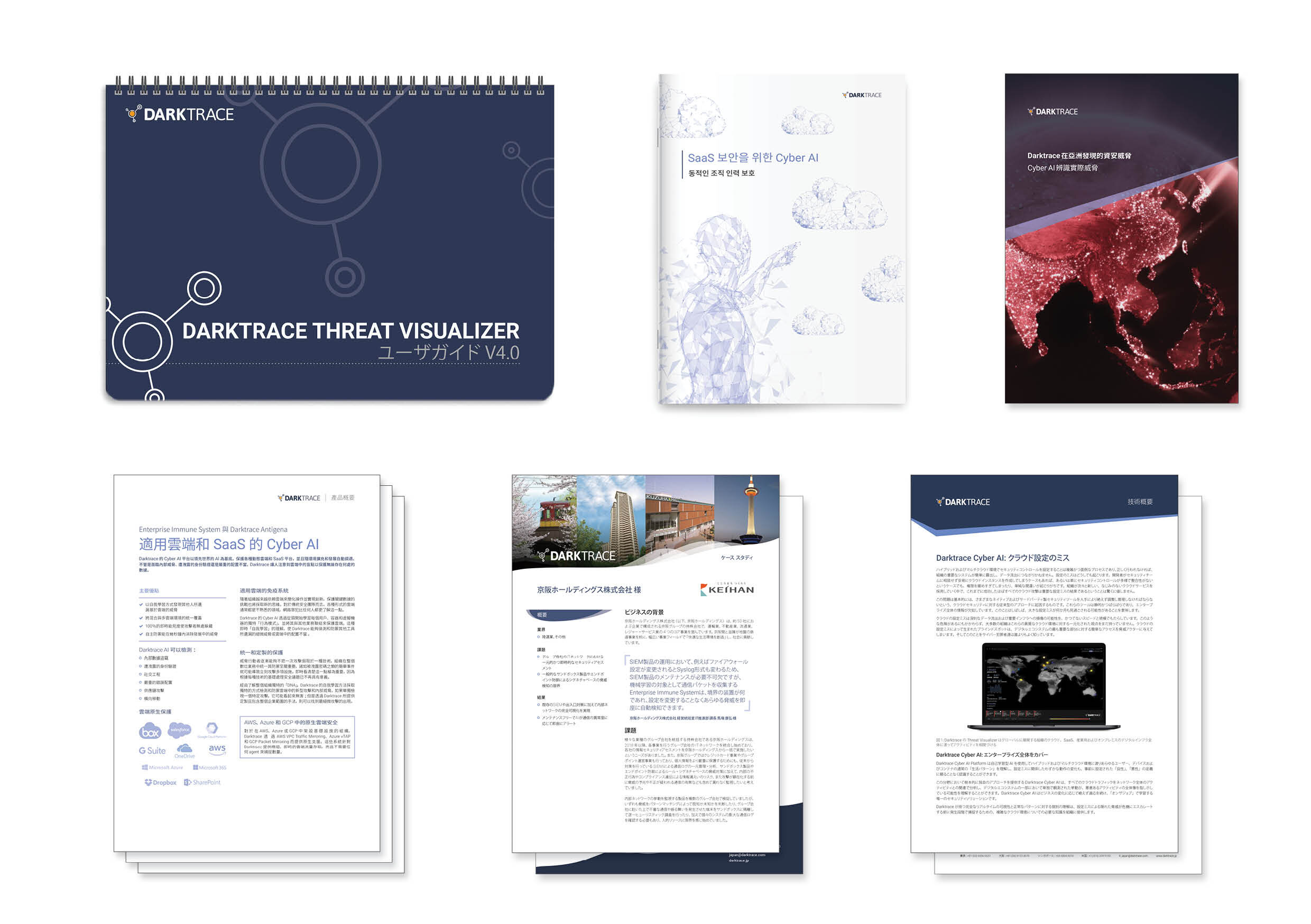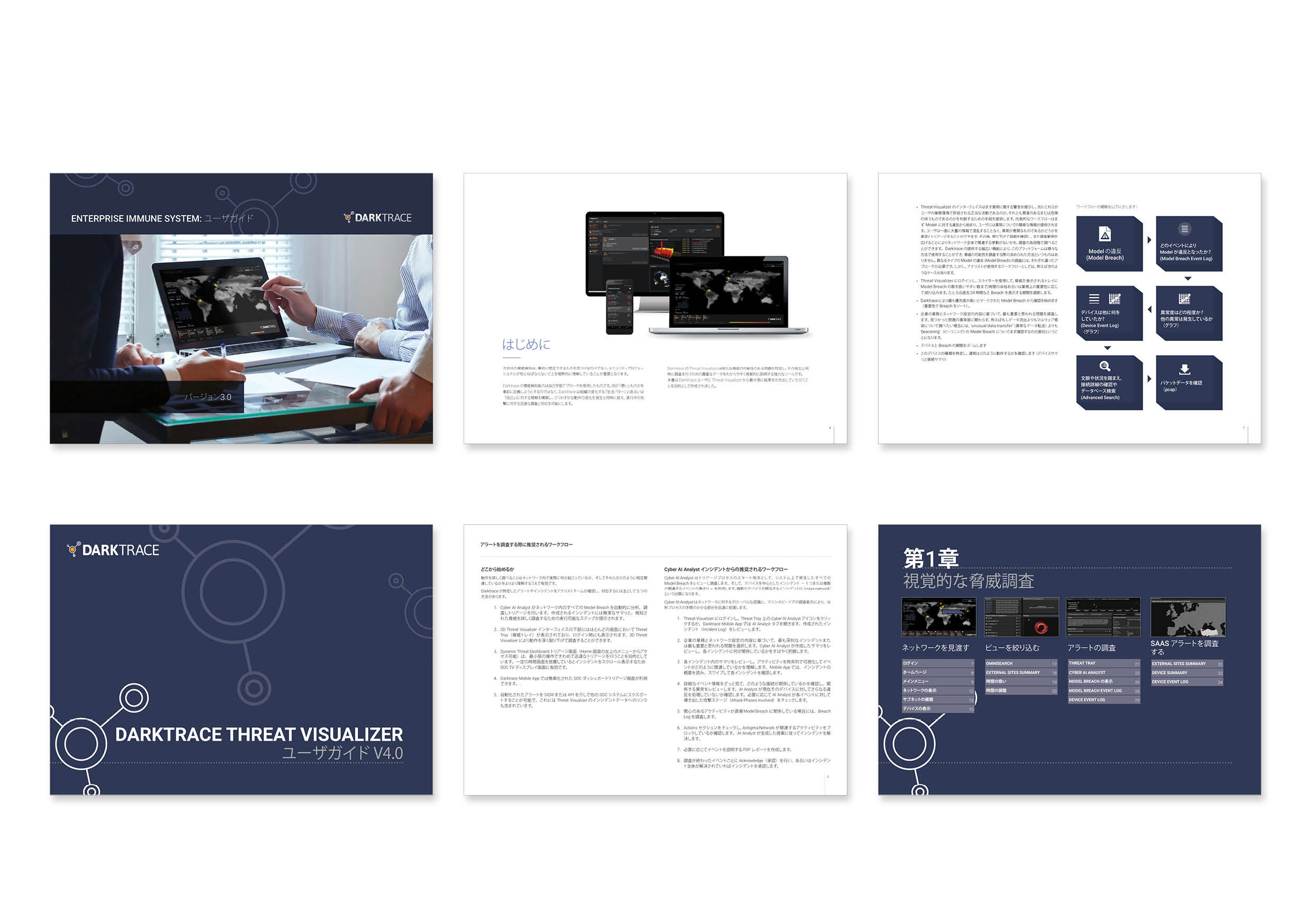












One of Darktrace’s biggest growth markets is Far East Asia, all collateral produced for the english speaking market is localised for use in the major regional languages. These languages include; Mandarin, Korean, Japanese, Indonesian, and Vietnamese. Each language has its own requirements and needs which are considered when adapting english designed collateral, each documents design and layout needed to amendments to allow the translated text to be represented correctly.
A major consideration which needed careful implementation is the localised Typesetting, and use of english characters within the translated text. Localised typesetting rules were used for layout across Mandarin, Korean and Japanese documents. The most challenging language to typeset is Japanese, because of the working nature of the language and absence of spaces between words. The general rules followed are to; keep words together on one line, keep commas and full stops from spilling over with a single character, and ensuring that each new line not start with a widowed particle (は、の、を、に、も、が). English characters present within the localised fonts were swapped to english branded fonts. This was achieved by using automated ‘Gerps’ in the paragraph style. This ensured a brand consisted document which flowed smoothly.
As with European Language collateral, Far East Asian language collateral uses localised punctuation marks relevant to the language. This is clearly demonstrated with the use of quote marks. Japanese, and Mandarin both use square quote brackets, while Korean, Indonesian, and Vietnamese use western style double inverted commas. The use of localised punctuation is a mater of vigilance, in understanding its use and execution. For example Mandarin uses two distinctly different version of the comma, one for general use in sentences(,), and the other for use in lists (、).
The types of collateral translated for localised use covered all major documents produced. This included; White Papers, Reports, Data Sheets, Technical Briefs, Product Overviews, Customer Case Studies, and Technical Manuales. Big Ticket documents were prioritised for translation, with many reports being translated days after the launch of the english document.
A key local marketing document type is the Japanese Exclusive Customer Case Studies. These case studies, unlike other assets mentioned in this section, are not translated from english bu written in original in Japanese, about Japanese based customers. These documents follow the standard layout template for Case Studies, Taking into consideration cultural trends for imagery selection and layout implementation.
Possibly the biggest annual translation project undertaken at Darktrace, is the design and layout for the Japanese translation of the ‘User Manual’. The base user manual document is over 150 pages of technical information, with multiple reference images. The implementation process is a logistical maelstrom of ensuring all translated section line up with the correlating imagery, while adapting to the variable change in translation length. Revisions and text amends are carefully executed actions to ensure accuracy in the end document.
